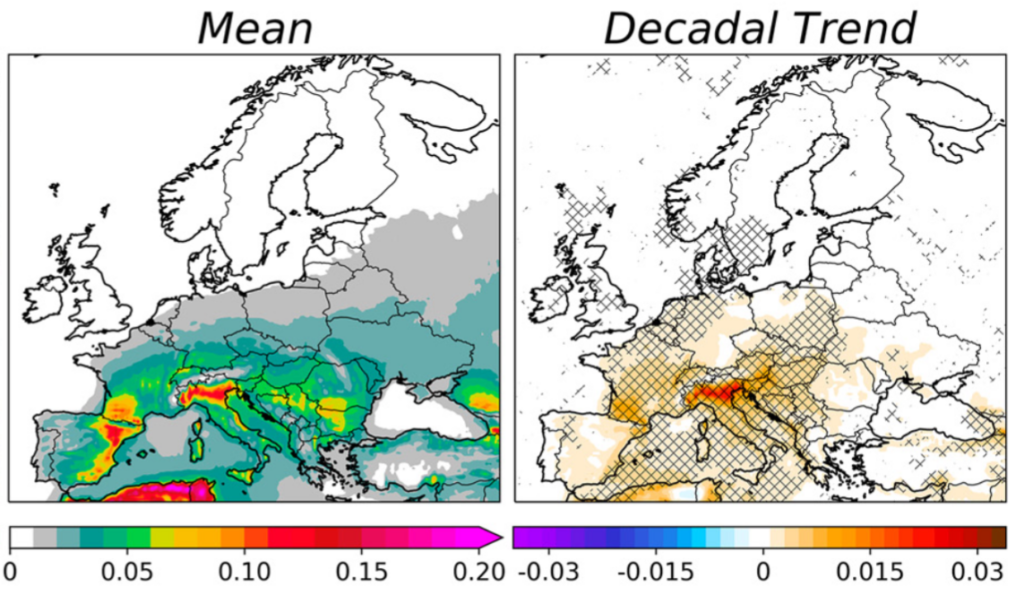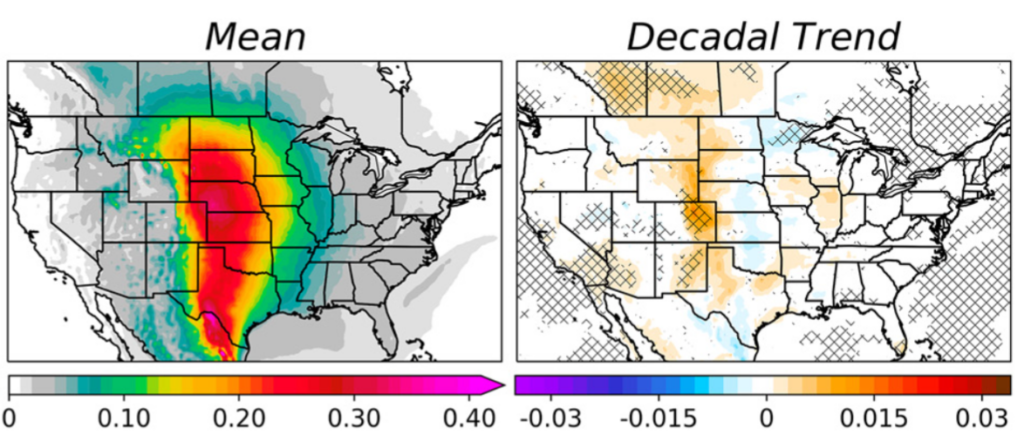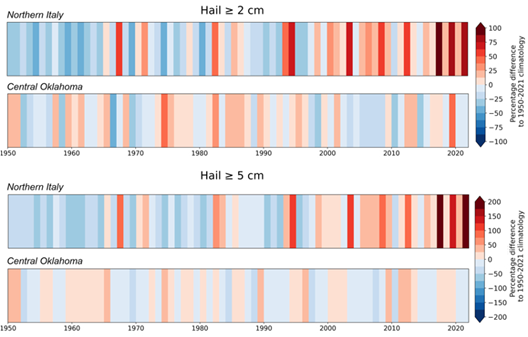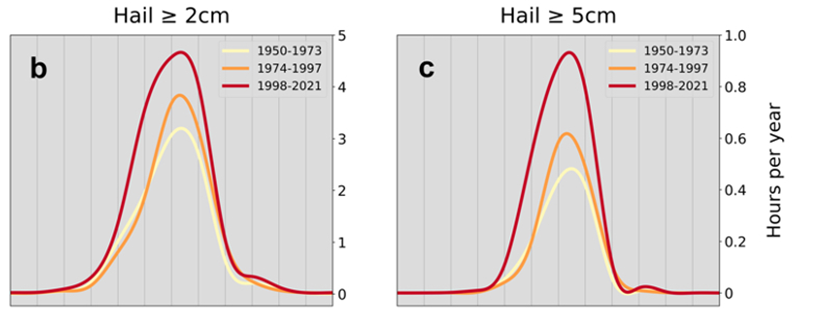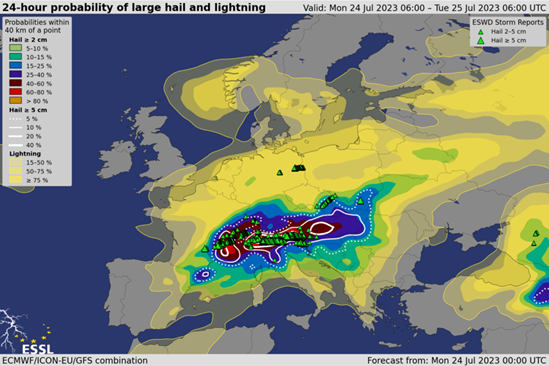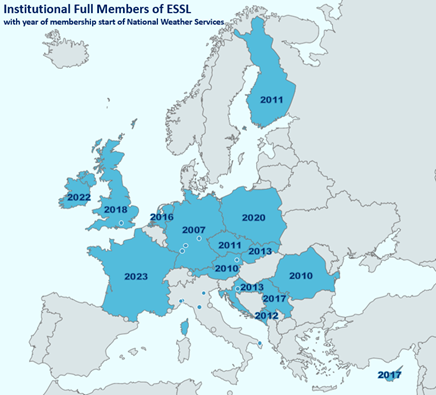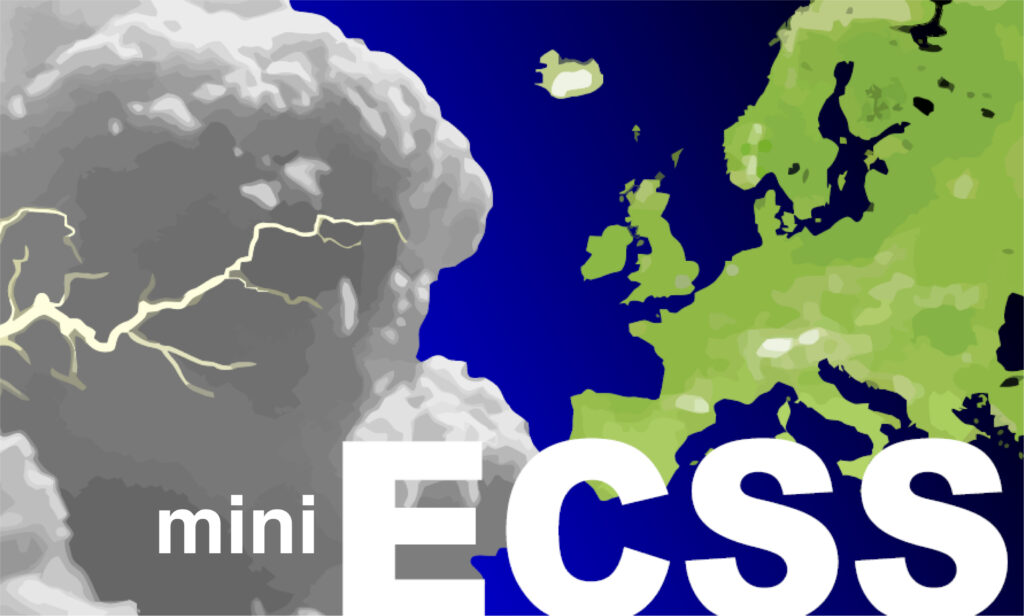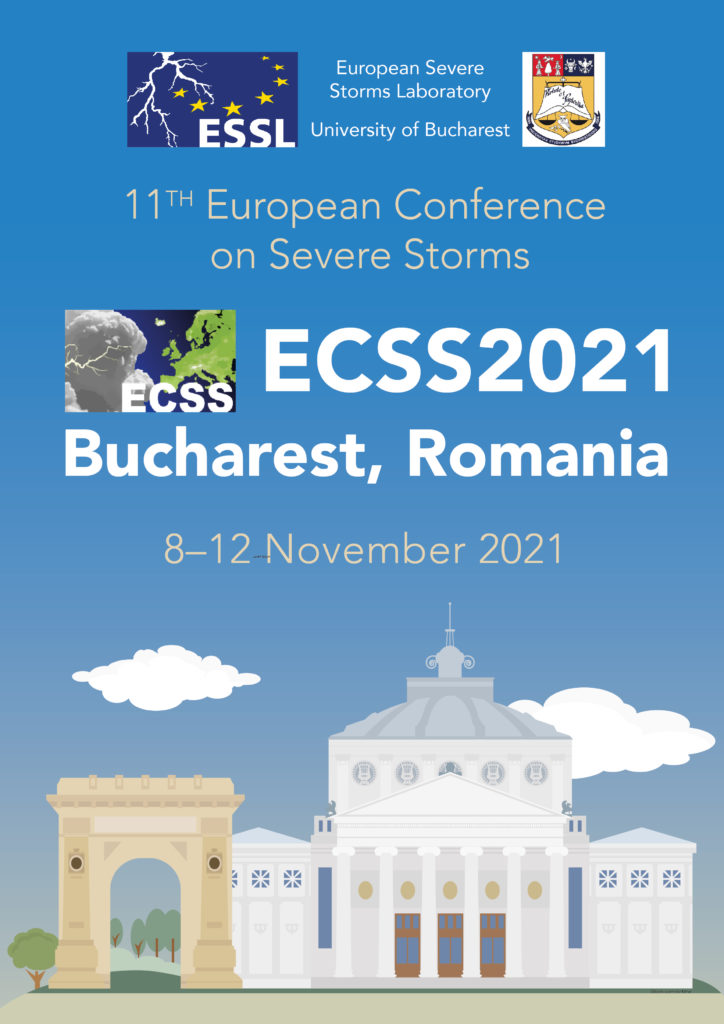for a researcher on modelling of severe storms
ESSL Services GmbH has a vacancy for a researcher, full-time (32 – 40 hours per week).
The researcher will be working within the Climate Research & Hazard Modelling Department with the primary task of developing methods for predicting severe weather occurrence using convection-permitting models and applying them across climate and forecasting timescales.
This task involves the combination of Additive Regression Convective Hazard Models developed at ESSL with novel datasets and their further development using machine learning techniques. Aside from this, the researcher may work in other projects that fit their expertise or areas of interest, such as radar and satellite meteorology, and teaching.
ESSL is looking for a highly motivated individual with some knowledge of severe convective storms and at least a Master’s degree in Meteorology, Physics or a related field, strong programming experience, and good English skills. Other favourable qualifications include experience with AI/ML techniques, prior work with large meteorological datasets and a track record of independent research, including peer-reviewed publications.
The ESSL team is a highly motivated and growing team that performs and supports research on severe convective storms, their prediction and their impacts globally. In addition, ESSL provides training courses to researchers and forecasters across Europe. Highlights of the ESSL include the European Severe Weather Database, the Radar & Weather Data Displayer, the ESSL Testbed, and its suite of AR-CHaMo convective hazard models. Thanks to extensive global collaborations at ESSL, the successful applicant will join a growing team that works with international research institutions and private-sector partners, seeing the real-world applicability of their research.
The salary of the successful applicant will depend on their qualifications and be broadly similar to the corresponding categories of the Austrian Science Fund (https://www.fwf.ac.at/en/funding/steps-to-your-fwf-project/further-information/personnel-costs). The employee will be based in Austria, but a large amount of teleworking can be accommodated. Employment in Austria comes with a standard health insurance and a basic pension.
The duration of the job is two years. In case of good performance and a continuing growth of ESSL in the areas of the applicant’s expertise and interest, ESSL will likely want to make the employment permanent. ESSL is interested in employing a diverse team and has a diversity and gender equality plan: https://www.essl.org/cms/essl-diversity-policy-and-gender-equality-plan
We invite interested and qualified persons to submit their CV and a cover letter to Dr Francesco Battaglioli (francesco.battaglioli@essl.org) by 31 December 2025.



